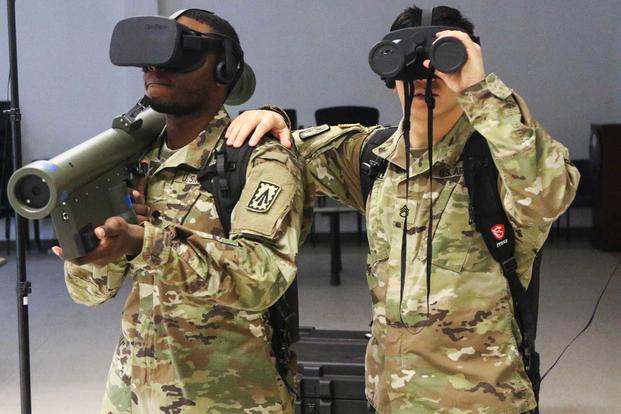intternetsoturi
Majuri
Näyttäis olevan ainakin osin sama järjestelmä, joka kehitettiin alunperin Navylle pari vuotta sitten.
https://www.naval-technology.com/ne...rnet-training-technology-for-us-navy-5692525/
BISim develops F/A-18 Super Hornet training technology for US Navy
By Srivari Aishwarya

Video aiheesta:
https://www.naval-technology.com/ne...rnet-training-technology-for-us-navy-5692525/
BISim develops F/A-18 Super Hornet training technology for US Navy
By Srivari Aishwarya

Bohemia Interactive Simulations (BISim) has developed new flight training technology for the US Navy's F/A-18 Super Hornet.
The virtual reality (VR) technology-based training system was designed as part of a contract between BISim and the Naval Air Warfare Center Training Systems Division (NAWCTSD).
Using the technology, which combines VR technologies and BISim’s virtual battlespace (VBS), naval personnel can perform training and mission rehearsal in a high-fidelity virtual environment, BISim said in a statement.
"We sought to leverage emerging VR technology to create a highly realistic yet affordable training solution."
BISim business development director John Burwell said: “We sought to leverage emerging VR technology to create a highly realistic yet affordable training solution that was portable enough to be transported for use in an aircraft carrier ready room.
“The results have exceeded expectations and show that the latest HMD and tracking technology have passed the threshold for widespread usability. Discomfort associated with the previous application of VR technologies have been virtually eliminated.”
The solution is integrated with the VBS Blue whole-earth rendering engine, and drives an Oculus Rift CV1 to produce a 360° field-of-view immersive environment.
It also employs an integrated Leap Motion sensor to track hand and arm movements, therefore enabling natural interaction with a virtual crew station.
The technology functions with Naval Air Systems Command-built next-generation threat system (NGTS) that models both threat and friendly aircraft, ground and surface platforms, and their corresponding weapons and subsystems.
The VR technology, incorporating a flight stick and throttle, runs on a COTS high-performance PC.
Built by Boeing, the F/A-18 Super Hornet is a twin-engine, supersonic, all-weather multirole fighter jet that is capable of landing and taking off from an aircraft carrier.
The virtual reality (VR) technology-based training system was designed as part of a contract between BISim and the Naval Air Warfare Center Training Systems Division (NAWCTSD).
Using the technology, which combines VR technologies and BISim’s virtual battlespace (VBS), naval personnel can perform training and mission rehearsal in a high-fidelity virtual environment, BISim said in a statement.
"We sought to leverage emerging VR technology to create a highly realistic yet affordable training solution."
BISim business development director John Burwell said: “We sought to leverage emerging VR technology to create a highly realistic yet affordable training solution that was portable enough to be transported for use in an aircraft carrier ready room.
“The results have exceeded expectations and show that the latest HMD and tracking technology have passed the threshold for widespread usability. Discomfort associated with the previous application of VR technologies have been virtually eliminated.”
The solution is integrated with the VBS Blue whole-earth rendering engine, and drives an Oculus Rift CV1 to produce a 360° field-of-view immersive environment.
It also employs an integrated Leap Motion sensor to track hand and arm movements, therefore enabling natural interaction with a virtual crew station.
The technology functions with Naval Air Systems Command-built next-generation threat system (NGTS) that models both threat and friendly aircraft, ground and surface platforms, and their corresponding weapons and subsystems.
The VR technology, incorporating a flight stick and throttle, runs on a COTS high-performance PC.
Built by Boeing, the F/A-18 Super Hornet is a twin-engine, supersonic, all-weather multirole fighter jet that is capable of landing and taking off from an aircraft carrier.
Video aiheesta:



